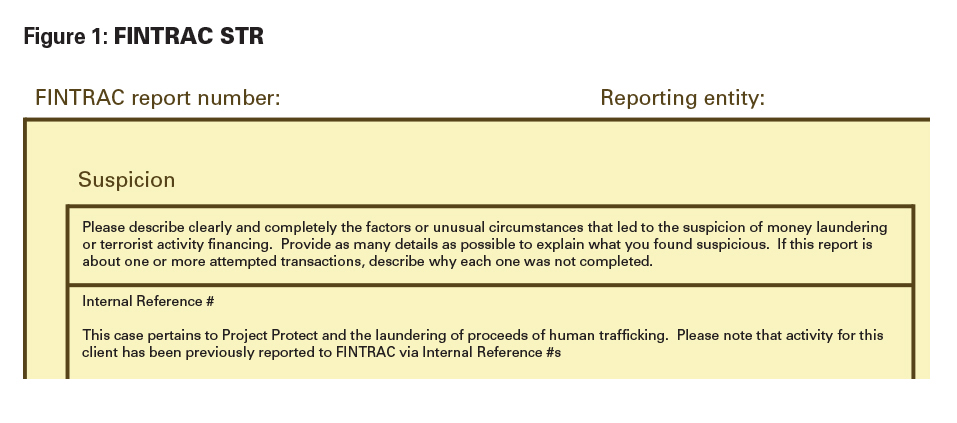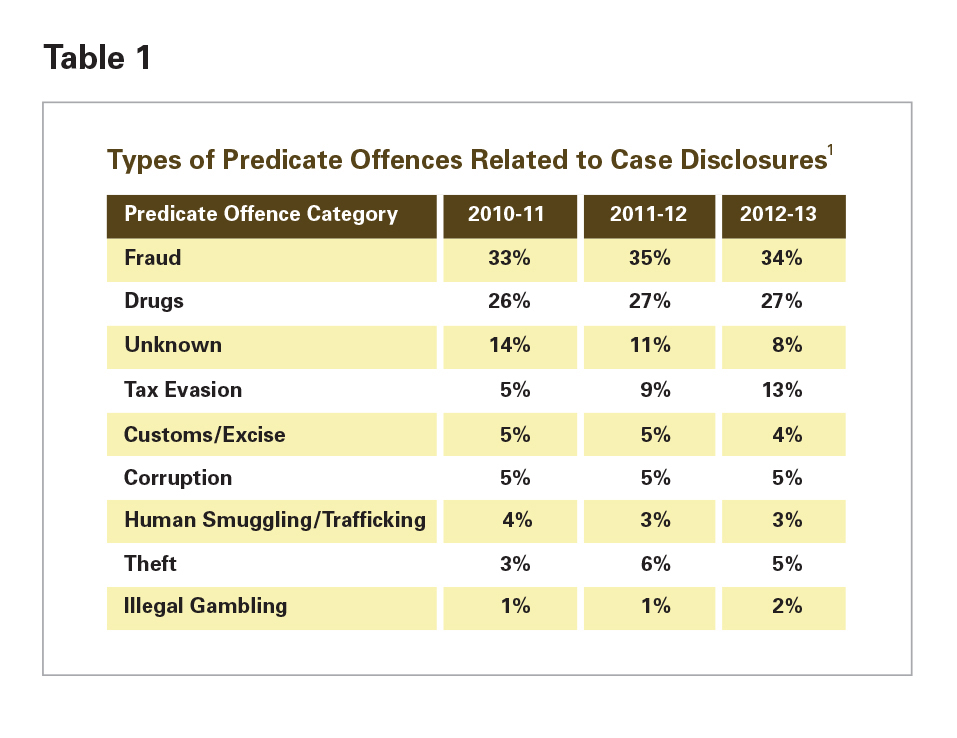
Editor’s note: This article was shared with the Vatican’s Pontifical Academy of Social Sciences (PASS) as a supplement to their Workshop on Assisting Victims of Human Trafficking that took place on November 4-6, 2017, in Vatican City.
Ending human trafficking is often regarded as an issue of others, as opposed to a domestic priority. One could argue that this preconception is a derivative of the label given to the acts summed up under its legal definition: recruiting, harboring, transporting or controlling the movement of a person for the purpose of exploitation.1 This deconstruction depicts how human trafficking does not have to be transnational in practice to be captured under the term. In addition, there are many statistics available to further support this notion. In using Canada as an example, one of the nation’s leading newspapers, The Globe and Mail, reported in 2016 that most of the country’s human trafficking took place within Canadian borders, with 311 of 330 cases (94 percent) investigated by the Royal Canadian Mounted Police (RCMP) identified as domestic.2
When analyzing domestic human trafficking in countries with larger populations, such as the U.S. and the U.K., the statistics are not as stark as those in Canada. However, they do outline the large number of citizens that are being trafficked domestically. The National Human Trafficking Hotline, operated by Polaris in the U.S., indicated that at least 25 percent of cases logged in 2017 involved U.S. citizens.3 In the U.K., the Referral Mechanism Statistics compiled by the National Crime Agency (NCA) on human trafficking between April and June 2017, lists U.K. citizens as tied for the second highest amongst all human trafficking related referrals.4
The aforementioned statistics are a sobering realization that human trafficking is as much a domestic problem as it is international. However, while this crime is being perpetuated within the borders of some of the most developed nations in the world, the prosecution of traffickers globally is alarmingly low. According to the 2017 State Department’s Trafficking in Persons (TIP) report, there were only 14,894 prosecutions and 9,071 convictions for trafficking globally in 2016.5 This pales in comparison to the number of total individuals enslaved today, which is estimated at between 20 and 30 million.6 Furthermore, according to the U.S. State Department, 600,000 to 800,000 people are trafficked across international borders every year, of which 80 percent are female and half are children.7
Disparity between those trafficked and prosecuted for trafficking, combined with the emerging realization of a domestic nexus, is now motivating many nations to reevaluate their approach to combating human trafficking. Canada is one such nation that has dedicated significant resources to this effort over the past two years. Examples of this mobilization include Canada’s most populous province (Ontario) pledging $CA72 million to end human trafficking8 and the formation of several nonprofit organizations (NPOs), including The Canadian Centre to End Human Trafficking. Another initiative that was launched in Canada within this timeframe is known as Project Protect, which employs a unique approach to disrupting human trafficking by breaking financial chains.
Project Protect
Project Protect was officially launched in January 2016; however, its origin spans back a month earlier, when anti-money laundering (AML) professional Peter Warrack accepted a challenge put forth by human trafficking survivor Timea Nagy at an Association of Certified Anti-Money Laundering Specialists (ACAMS) Conference in Toronto, Canada.9 The basis of the challenge was to call upon financial institutions in Canada to do more when it came to human trafficking. Nagy chose to levy this challenge to AML professionals given their existing mandate to report suspicious behavior pertaining to money laundering, to Canada’s financial intelligence unit (FIU) the Financial Transactions and Reports Analysis Centre of Canada (FINTRAC). In addition, human trafficking was already recognized as a predicate offense for money laundering, so it made the challenge seem even more appropriate to Nagy.
To meet the task, which he accepted, Warrack constructed a partnership model with a membership base comprised of individuals from both public and private institutions. Participants would end up representing several major Canadian financial institutions, regulators, law enforcement agencies from the municipal, provincial and federal level, as well as policymakers, NPOs and technology companies. The goal of their combined (and equal) partnership would be two fold: to increase awareness of human trafficking amongst the members’ respective institutions and to increase the reporting of suspicious transactions pertaining to possible human trafficking to FINTRAC.
Warrack also laid out a four-point strategy at the onset of Project Protect for its members to abide by to ensure the goals of the project were met in a timely manner:
- Each financial institution will act independently to identify suspected human traffickers and to report suspicious transactions to FINTRAC by submitting suspicious transaction reports (STRs).
- FINTRAC will direct intelligence derived from the STRs to relevant law enforcement partners (e.g., sexual crimes units).
- FINTRAC will work with Project Protect partners to develop and publish typologies and red flags associated to these crimes and all partners will be dynamically kept on the same page with respect to ongoing information updates.
- Law enforcement will be able to utilize increased intelligence toward prosecution of new human trafficking cases.
To further elaborate on the STR, which is the main tool of Project Protect members, it is a standard form that every reporting entity in Canada utilizes to convey suspicious activity to FINTRAC. Each reporting member of the project was instructed to indicate “Project Protect” within the summary section of the STR to highlight the nexus to possible human trafficking. FINTRAC would then mine for these STRs through a keyword search and disclose relevant information to law enforcement. For an example, see Figure 1.

Internal Impact on Members
Project Protect was specifically designed to be a zero-cost initiative that would seek to leverage financial institutions’ existing requirements through the intelligence-led knowledge building of internal FIUs. In addition, Project Protect would also seek to strengthen formal communication channels between financial institutions, FINTRAC and law enforcement through maximizing their efficiency. It is important to note that the format in which the model was setup was conscious to the fact that no breaches of privacy laws, on neither the public or private sides, would have to be undertaken in order for the project to be effective. The only information that was to be shared between the members of Project Protect would be macro trends, typologies and publicly available adverse media pertaining to human trafficking.

Outcome and Achievements
As Project Protect nears its second year anniversary, it has thus far achieved both of its goals in raising awareness and reporting on human trafficking. However, the path toward success involved significant contributions from its membership base both jointly and independently. Collaboratively, the members held two closed-door conferences, one AML industry-wide conference hosted by the ACAMS Toronto Chapter and their President Stuart Davis, as well as a one-year retrospect anniversary seminar to reflect on the first year’s achievements. In addition, one of Project Protect’s major contributive achievements was the assistance their members provided FINTRAC to compile a list of indicators of possible human trafficking. This list was distributed to all reporting institutions across Canada via an Operational Alert.10
Sharing and compiling indicators not only assisted in drafting the FINTRAC Operational Alert but also aided in significantly increasing reporting amongst all reporting entities. Figure 2, provided by FINTRAC to The Globe and Mail, highlights this increase and contrasts the number of STRs received the year before and after Project Protect was launched.11

The impact Project Protect has had on reporting trends is further noticed when comparing Project Protect launch figures to historical reporting periods dating back to 2011 when human trafficking and smuggling were summed together. The year-over-year breakdown highlighted in Table 1 does not reference the specific number of STRs received on each of the predicate offenses listed, but it does draw attention to the reporting ratio for each based on the total amount of STRs received.12
International Acknowledgement
This dramatic increase in reporting has not gone unnoticed by the international community. One such example of this acknowledgement was from Madina Jarbussynova, the Special Representative and Co-ordinator for Combating Trafficking in Human Beings for the Organization for Security and Co-operation in Europe (OSCE). During her visit to Ottawa in June 2017, Jarbussynova stated:
“The progress made by Canada since the visit in 2011 is exemplary…. [T]he ‘Project Protect’ initiative implemented by the Financial Transaction Analysis Centre (FINTRAC) is an innovative model designed to identify traffickers and follow the money gained through exploitation of victims, thus contributing to the criminal investigation into human trafficking.”13
Other forms of recognition Project Protect has garnered over the past two years include coverage from CNN’s Freedom Project14 and a formal acknowledgement by the Director of Serious and Organized Crime Policy Division for Public Safety Canada, Michael Holmes, to the United Nations General Assembly in September 2017.
In Director Holmes’ address to the General Assembly he stated the following on Project Protect:
“Mr. President, I would like to highlight one initiative that I believe will be of interest to States Parties present. Launched in 2016, Project Protect is a joint initiative between the Government of Canada and the private sector. It allows Canadian financial institutions to report transactions that are suspected of money laundering related to trafficking in persons for sexual exploitation …. Compared to the same [four-month] period the year before, in 2016, the Project produced a 400 [percent] increase in financial intelligence disclosures to law enforcement linking money laundering to trafficking in persons.”
This short but concise address captured the essence of the project and has contributed toward more foreign countries requesting knowledge on the project for implementation within their own borders.
In addition, the Project Protect model was discussed at the Financial Action Task Force (FATF) meeting in Moscow earlier this year and at a meeting for the Egmont Group of FIUs. FATF’s most recent 2017 report, Private-Public-Sector Information Sharing, references FINTRAC’s Operational Alerts—a concept utilized in Project Protect and the first example of co-developed indicators developed by the public and private sectors.15 Lastly, in Vatican City on November 4-6, 2017, Project Protect was presented to the Vatican’s Pontifical Academy of Social Sciences as part of their workshop on assisting victims of human trafficking.
Forward Thinking
The original mandate of Project Protect, to increase knowledge and suspicious activity reporting, continues onwards. After receiving notable praise for their initial efforts, its members are now refocusing their attention on isolating previously unidentified trends and typologies. One such trend that has been noted is the increased use of virtual currencies, such as Bitcoin, to facilitate payments and online advertising related to traffickers. Further support has been given to the connection between Bitcoin and human trafficking by Rebecca Portnoff, a UC Berkeley Ph.D. candidate.
Portnoff and her research team has developed first-of-its-kind automated techniques to identify adult classified ads tied to human trafficking rings by linking the ads to public information available on the Bitcoin blockchain. The following is an excerpt from their research method:
“The researchers deployed their automated author identification techniques on a sampling of 10,000 real adult ads on Backpage, a four-week scrape of all adult ads that appeared on Backpage during that time, as well as on several dozen ads they themselves placed as a point of comparison. They reported an 89 percent true-positive rate for grouping ads by author—significantly more accurate than current stylometric machine learning algorithms.”16
Portnoff’s research highlights emerging concerns, such as virtual currencies, that will motivate the initial Project Protect group to continue working together. In addition, her research has prompted a third goal to emerge for the original members, which is to see the public-private model they created utilized to address new national issues that affect not only every community within Canada, but the international community at large. These issues include mass-marketing fraud, uncovering international money launderers and the burgeoning fentanyl crisis that is plaguing North America, all of which have a nexus with cryptocurrency.
Conclusion
Over the past two years, Project Protect has proven to be an effective model to adopt when attempting to address large-scale public safety issues that intersect with the financial system. For example, collaboratively combining efforts to tackle macro issues, without divulging personal or private information of customers or citizens, is already starting to achieve results in addressing other predicate offenses to money laundering in Canada, such as mass-marketing fraud via Project Chameleon.17 In addition, Project Protect members are becoming increasingly aware of many other countries that are considering creating similar projects, or modifying existing task forces, to address wide-scale issues within their own borders.
All of these initiatives support the notion that the intelligence advantages gained in utilizing a public-private partnership far outweigh those obtained if institutions were to operate in an independent or siloed manner. If Project Protect has demonstrated one thing above all else over the past two years it is that all organizations tasked with mitigating risks to society, whether in the public or private sphere, achieve better results in a timelier manner when working together than if they were segregated. However, in order for this vision to be realized it has to be accepted that competition does not apply equally across all functions of an institution, particularly within the private sector. Those tasked with ensuring public safety are only in competition with those determined to undermine it.
- “What is human trafficking?,” Government of Canada, October 25, 2016, http://www.justice.gc.ca/eng/cj-jp/tp/what-quoi.html
- Tavia Grant, “The Trafficked: How Sex Trafficking Works in Canada,” The Globe and Mail, February 10, 2016, https://beta.theglobeandmail.com/news/national/the-trafficked-how-sex-trafficking-works-in-canada/article28700689/?ref=http://www.theglobeandmail.com
- “Hotline Statistics,” National Human Trafficking Hotline, https://humantraffickinghotline.org/states
- “National Referral Mechanism Statistics,” National Crime Agency, April-June 2017, http://www.nationalcrimeagency.gov.uk/publications/national-referral-mechanism-statistics/2017-nrm-statistics/824-modern-slavery-and-human-trafficking-national-referral-mechanism-statistics-april-to-june-2017/file
- “Human Trafficking by the Numbers,” Human Rights First, January 2, 2017, https://www.humanrightsfirst.org/resource/human-trafficking-numbers
- “11 Facts About Human Trafficking,” Do Something, https://www.dosomething.org/us/facts/11-facts-about-human-trafficking
- Ibid.
- Tavia Grant, “Ontario Unveils $72-Million Plan to Fight Human Trafficking,” The Globe and Mail, June 30, 2016, https://beta.theglobeandmail.com/news/national/canada-continues-to-be-a-source-for-sex-trafficking-annual-report/article30700484/?ref=http://www.theglobeandmail.com
- Tavia Grant, “Canadian Banks, Police Following Money Trail to Target Human Trafficking,” The Globe and Mail, February 21, 2017, https://beta.theglobeandmail.com/news/national/canadian-banks-police-following-money-trail-to-target-human-trafficking/article34093888/?ref=http://www.theglobeandmail.com
- “Indicators: The Laundering of Illicit Proceeds from Human Trafficking for Sexual Exploitation,” FINTRAC, December 15, 2016, http://www.fintrac.gc.ca/guidance-directives/overview-apercu/operation/oai-hts-eng.pdf
- “FINTRAC Tactical Intelligence: Project Protect,” FINTRAC, https://beta.theglobeandmail.com/files/editorial/News/0219-nw-na-trafficking/PROJECT-PROTECT.pdf
- “Results Through Financial Intelligence: FINTRAC Annual Report 2013,” FINTRAC, 2013, http://publications.gc.ca/collections/collection_2013/canafe-fintrac/FD1-2013-eng.pdf
- “Canada’s ‘Project Protect,’ an Innovative Model to Hit Traffickers’ Finances, Says OSCE Special Representative on Official Visit,” OSCE, June 27, 2017, http://www.osce.org/secretariat/325876
- “Freedom Project: Taking on the Traffickers,” CNN, http://www.cnn.com/videos/world/2016/05/20/cfp-timea-nagy-canada-trafficking-freedom-project-sebastian-pkg.cnn
- “Private Sector Information Sharing,” FATF, November 2017, http://www.fatf-gafi.org/media/fatf/documents/recommendations/Private-Sector-Information-Sharing.pdf
- Brett Israel, “In a Step Toward Fighting Human Trafficking, Sex Ads Are Linked to Bitcoin Data,” Berkeley News, August 16, 2017, http://news.berkeley.edu/2017/08/16/in-a-step-toward-fighting-human-trafficking-sex-ads-are-linked-to-bitcoin-data/
- Nick J. Maxwell and David Artingstall, “The Role of Financial Information-Sharing Partnerships in the Disruption of Crime,” Royal United Services Institute for Defence and Security Studies, October 2017, https://rusi.org/sites/default/files/201710_rusi_the_role_of_fisps_in_the_disruption_of_crime_maxwwell_artingstall_web_2.pdf










